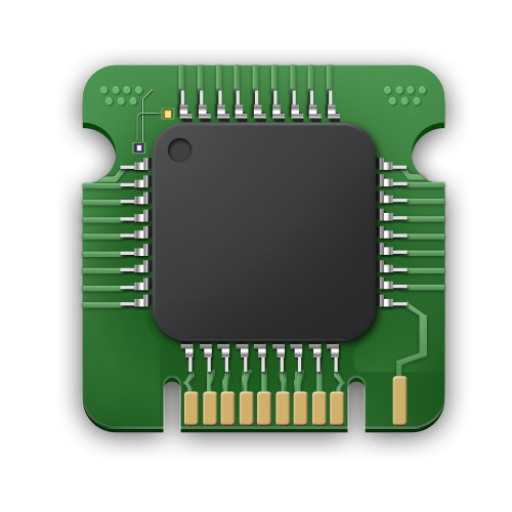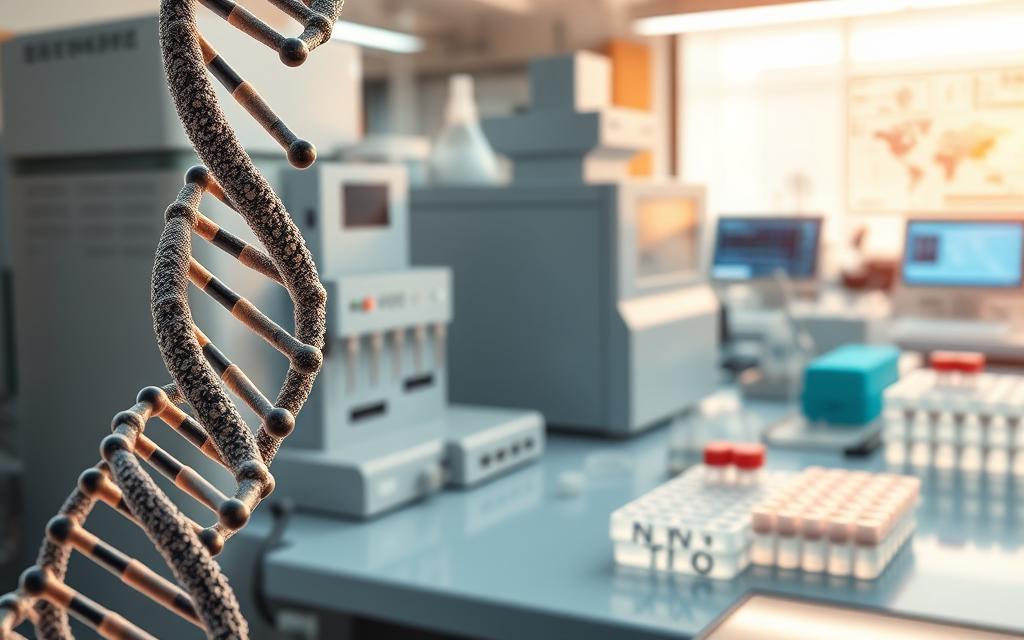DNA synthesis is a crucial aspect of modern biotechnology, enabling the creation of new DNA strands through various methodologies. This process is fundamental to both natural biological processes and artificial laboratory settings.
The synthesis of DNA involves replicating or constructing DNA sequences, which is vital for advancements in research, medicine, and industrial applications. DNA synthesis technology has evolved significantly, becoming a cornerstone of genetic research and synthetic biology.
By exploring the principles behind DNA synthesis and its applications, we can better understand its significance in contemporary biology and technology. This introduction provides a foundation for delving into the specifics of DNA synthesis and its far-reaching implications.
DNA synthesis is a fundamental process that occurs naturally in living organisms and can also be achieved synthetically in the lab. Understanding the differences between these two processes is crucial for advancing research and biotechnology applications.
Natural DNA Synthesis in Living Organisms
Natural DNA synthesis occurs during cell division, where a cell duplicates its DNA to ensure each new cell receives a complete set of genetic instructions. This process follows a semi-conservative model, where each new DNA molecule contains one original strand and one newly synthesized strand. The natural process involves several key enzymes, includinghelicasesthat unwind DNA,primasethat creates RNA primers, andDNA polymerasethat adds nucleotides to the growing strand.
Synthetic DNA Synthesis: Creating DNA Without Templates
Synthetic DNA synthesis allows scientists to create DNA molecules without a template and in virtually any desired sequence. This process offers unprecedented control over genetic material and has significant implications forsynthetic biologyand research. While natural DNA synthesis is highly regulated and optimized, synthetic methods face challenges related to accuracy, length limitations, and efficiency. Advances in synthetic DNA synthesis are crucial for developing better technologies for creating custom DNA sequences.
The comparison between natural and synthetic DNA synthesis processes highlights how scientists have adapted natural mechanisms to create laboratory techniques that can produce DNA sequences on demand. Understanding these differences is key to advancingDNA synthesis technologyand its applications in various fields.
What is DNA Synthesis Technology and How Does It Work
DNA synthesis technology encompasses a range of methods used to create DNA strands artificially, transforming the landscape of genetic research. This technology has enabled significant advancements in various fields, including molecular biology and genetic engineering.
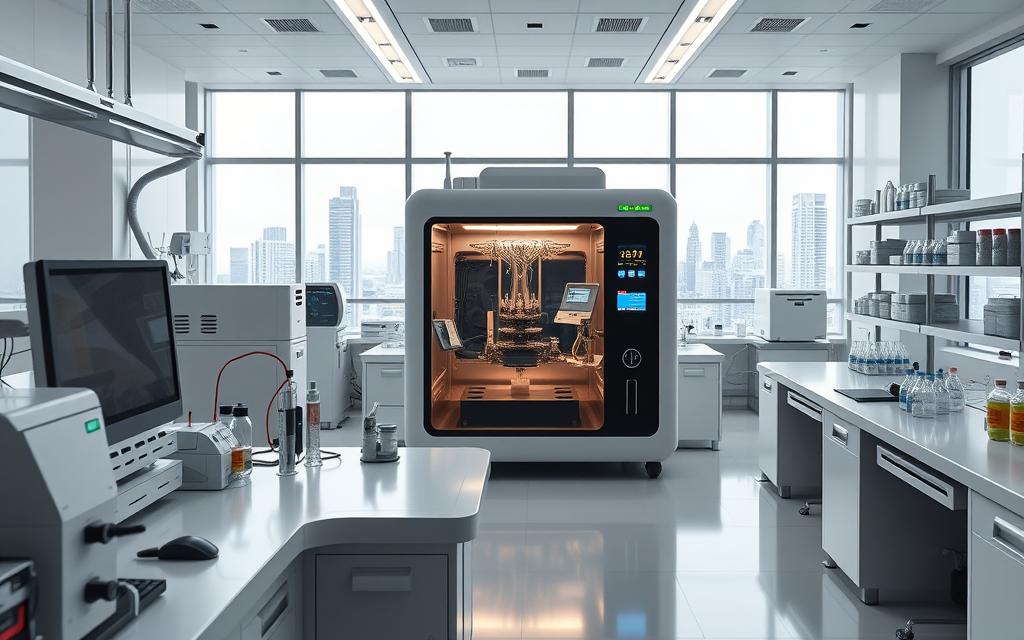
Chemical Synthesis Methods
Traditional chemical synthesis methods involve the sequential addition of nucleotides to create a DNA strand. This process utilizes a solid support system and specialized chemical reagents. The core technology behind these methods, known as phosphoramidite synthesis, was developed in the 1980s.
The Phosphoramidite Chemistry Process
The phosphoramidite chemistry process works by adding protected nucleotide building blocks one at a time. Each cycle involves several key steps: activation, coupling, capping, and oxidation. Despite its efficiency, this method has limitations, including the use of toxic chemicals and decreasing efficiency as the sequence length increases.
Understanding the mechanisms of DNA synthesis technology is crucial for appreciating its current applications and the challenges that newer methods aim to overcome. As this technology continues to evolve, improvements in automation, miniaturization, and parallelization are helping to increase throughput and reduce costs.
Key Steps and Components in DNA Synthesis
DNA synthesis is a complex process involving several key steps and components. The process is crucial for understanding how genetic material is replicated and manipulated in various biological and synthetic contexts.
Initiation and Primer Synthesis
The initiation of DNA synthesis begins at specific sites called origins of replication, where helicases unwind the double helix, creating a replication fork. Primase synthesizes short RNA primers, providing a starting point for DNA synthesis. This step is crucial for the subsequent addition of nucleotides.
Nucleotide Addition and Base Pairing
DNA polymerase enzymes catalyze the addition of nucleotides to the growing DNA strand. Nucleotides are the building blocks of DNA and pair with complementary bases on the template strand following base pairing rules (A-T, G-C). The accuracy of this process is crucial for maintaining genetic integrity.
Proofreading and Error Correction
DNA polymerase also possesses proofreading capabilities, ensuring accuracy in base pairing. Incorrectly paired nucleotides are removed and replaced with the correct pair, maintaining the fidelity of the DNA synthesis process. This step is vital for preventing mutations and ensuring the stability of genetic information.
| Step | Description | Key Enzymes |
|---|---|---|
| Initiation | Unwinding of DNA at origins of replication | Helicases |
| Primer Synthesis | Synthesis of RNA primers | Primase |
| Nucleotide Addition | Addition of nucleotides to the growing strand | DNA Polymerase |
| Proofreading | Correction of errors in base pairing | DNA Polymerase |
Enzymatic DNA Synthesis: The Next Generation
The advent of enzymatic DNA synthesis is revolutionizing the field of genetic engineering. This innovative approach leverages natural DNA polymerase enzymes to create DNA strands, offering a more efficient and accurate alternative to traditional chemical synthesis methods.
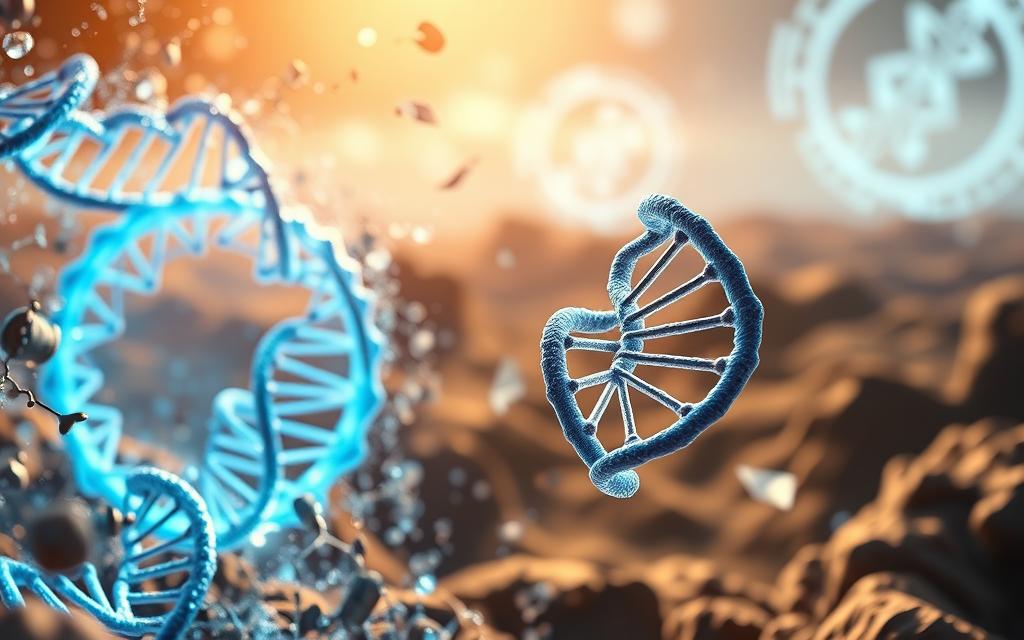
How Enzymatic Synthesis Differs from Chemical Methods
Unlike chemical DNA synthesis, enzymatic synthesis mimics the natural biological process of DNA replication. This method uses modified nucleotides and engineered polymerase enzymes to control the sequential addition of bases, much like “adding pearls one by one” to create a specific sequence. The key difference lies in the use of enzymes to facilitate the synthesis process, resulting in potentially higher accuracy and longer DNA sequences.
Advantages and Current Limitations
The advantages of enzymatic DNA synthesis include milder reaction conditions, potentially higher accuracy, and the ability to create longer DNA sequences without the accumulation of errors. However, current limitations include challenges in engineering enzymes to work efficiently with modified nucleotides, controlling the addition of single nucleotides per cycle, and scaling the technology for commercial applications.
- Enzymatic DNA synthesis offers a more natural and efficient approach to creating DNA strands.
- Several biotechnology companies, including DNA Script, Evonetix, and Nuclera, are actively developing enzymatic DNA synthesis platforms.
- The technology has the potential to transform various fields, including synthetic biology, gene therapy, and biotechnology.
Applications of DNA Synthesis Technology
DNA synthesis, performed outside of a cell, has numerous significant applications across different scientific and technological fields. Synthetic DNA synthesis is a technique that allows scientists to create DNA molecules without a template and in almost any sequence.

Research and Biotechnology Applications
DNA synthesis technology has revolutionized research and biotechnology by enabling gene cloning, site-directed mutagenesis, and the construction of plasmids and vectors for genetic engineering experiments. These advancements have significantly accelerated the pace of genetic research and its applications.
Medical and Pharmaceutical Uses
In medicine and pharmaceuticals, synthetic DNA is crucial for developing diagnostic tools, creating vaccine components, and producing therapeutic proteins through recombinant DNA technology. It also advances personalized medicine approaches, offering tailored treatments for specific genetic conditions.
Synthetic Biology and Industrial Applications
Synthetic biology applications include designing synthetic genomes and engineering microorganisms with novel functions. Industrial applications range from creating enzymes for biocatalysis to developing microorganisms that can produce biofuels, textiles, or help in environmental remediation and waste recycling.
Current Innovations and Future Directions
The landscape of DNA synthesis is undergoing a significant transformation with the advent of new technologies. These advancements are making DNA synthesis more accessible, efficient, and cost-effective, thereby revolutionizing genetic research and its applications.
Benchtop DNA Synthesizers
Benchtop DNA synthesizers represent a major innovation, enabling individual laboratories to produce custom DNA sequences on-site. Companies like DNA Script have developed desktop DNA printers that allow researchers to have greater flexibility and control over their experimental timelines. This reduces dependence on third-party providers and cuts down wait times significantly.
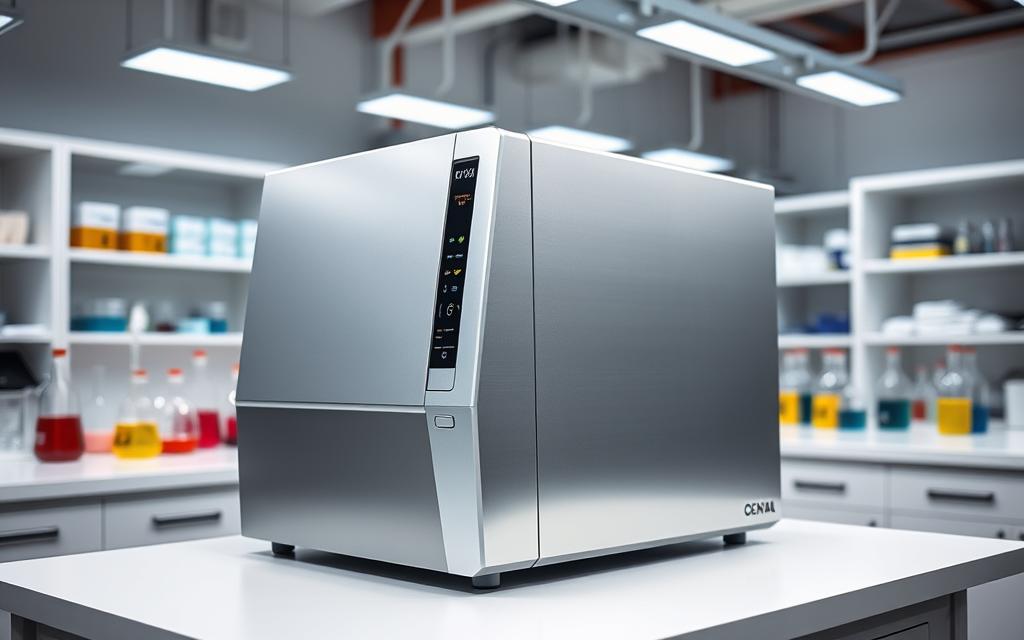
Long-Strand DNA Synthesis
Long-strand DNA synthesis is pushing the boundaries of genetic research. Companies like Ribbon Biolabs are developing technologies that can create DNA sequences of 20,000 base pairs or more, potentially enabling the synthesis of entire genes or even genomes. This capability opens up new possibilities for synthetic biology and genetic engineering.
DNA Data Storage Potential
Perhaps one of the most revolutionary future applications of DNA synthesis is DNA data storage. With DNA capable of storing up to 15 petabytes per gram, it offers a potential solution to the world’s growing data storage challenges. This technology could transform the way we store digital information, providing a dense and durable medium for data archiving.
| Innovation | Description | Potential Impact |
|---|---|---|
| Benchtop DNA Synthesizers | Enables on-site production of custom DNA sequences | Reduces wait times and dependence on third-party providers |
| Long-Strand DNA Synthesis | Creates DNA sequences of 20,000 base pairs or more | Enables synthesis of entire genes or genomes |
| DNA Data Storage | Stores digital information in DNA | Potential solution to growing data storage challenges |
Conclusion
With the rapid development of DNA synthesis technology, the possibilities for genetic engineering are expanding. As highlighted by Nobel prize winner Richard Feynman’s quote, “What I cannot create, I cannot understand,” the ability to synthesize DNA sequences gives us deeper insights into biological systems. The transition from traditional chemical methods to enzymatic approaches is a significant advancement, promising to overcome current limitations in length, accuracy, and cost. As DNA synthesis becomes more accessible and powerful, researchers will have greater capabilities to design and build complex biological systems, potentially unlocking new solutions to challenges in medicine, agriculture, and environmental sustainability. This technology may be a cornerstone of a transition from a petrochemical-based economy to a biology-based economy. By making DNA synthesis faster and more affordable, we democratize access to synthetic biology tools, accelerating innovation across multiple fields.
